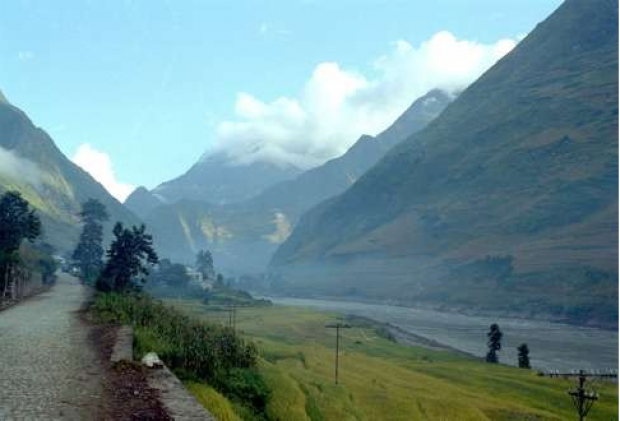China’s Grand Canyon: No More Small Hydropower Plants for Country’s Last Wild River | South China Morning Post

This article originally appeared in the South China Morning Post.
No new small-scale hydropower plants will be built on the Nu River to help restore the environment, Yunnan officials gathering in Beijing have said, with the provincial party boss even talking about turning it into “China’s Grand Canyon”.
But fate of the country’s last free-flowing river is still unclear as the officials remained tight-lipped on whether they would go ahead with plans to build a series of dams on the upper reaches of the Nu, known as the Salween River outside China and protected as a Unesco World Heritage site.
Yunnan party boss Li Jiheng said last week on the sidelines of the national “Two Sessions” that the provincial government had decided to stop developing “small mines” and “small hydropower projects” to help restore vegetation on river banks.
“The Nu River will become a world-level tourism destination in five to 10 years. It will succeed, even surpass the Grand Canyon in the United States,” China National Radio quoted Li as saying.
The provincial decision to develop a national park along the Nu River canyon began to emerge late last year, exciting some environmentalists who have called for scrapping plans to dam the river.
But they were not so sure now after Yunnan officials remained silent on mega dams along the Nu in regions prone to earthquakes. The plans were shelved in 2005 by then premier Wen Jiabao on environmental and safety concerns, but were revived in 2013.
Building small hydropower projects does not involve damming the mainstream of the river.
“Their comments are rather vague and tricky. No one would confirm plans for large dams,” said Wang Yongchen, an environmentalist who has fought for a decade to maintain the natural state of the Nu.
“They say it’s up to the central leaders if large dams will be built.”
A national five-year plan (2016-2020) for developing renewable energy currently soliciting comments still listed the Nu as a “hydropower base”, the Economic Information Daily reported in January.
In 2013, the State Council stunned environmentalists by quietly reviving plans to build at least five of the 13 dams originally planned on Nu River, without public consultation. Since then, local officials have admitted preparatory work – such as building roads around the planned sites – has started. But no real progress had been made on dam construction so far.

Stephanie Jensen-Cormier, China programme director of International Rivers, said there was little financial incentive to build dams along the Nu, as a result of shrinking demand for electricity as the economy slowed.
Feng Weixiang, a native of the Nu region who is also an elite political adviser, admitted in a panel discussion that it was “no longer necessary” to build small hydro plants on the branches of the river, as about two-thirds of the completed projects were sitting idle, with power generating capacity far beyond what the poor grid system could handle.
Scientists recently found 40 per cent of aquatic species in the Nu had been wiped out by human activities such as overfishing, mining and construction.
Dams could deal a much heavier blow to the ecosystem, affecting millions of fishermen and farmers in countries further downstream.


